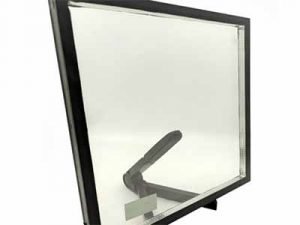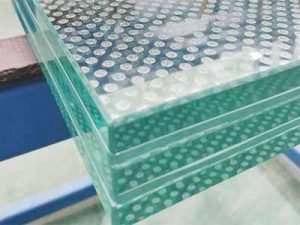Toughened glass plays a more and more important role in our daily life. From interior desktops, doors, shower systems, partition to exterior facades, balustrades, handrails, pool fencing, roof, curtain walls, etc.
However, not everyone has a good knowledge of toughened glass. In fact, It can be divided into many types according to different characteristics.
Appearance: Clear, Low Iron, Tinted/Colored toughened glass
Clear/Transparent
toughened glass or transparent tempered glass, the most common glass type.
Low Iron/Extra Clear
Low iron, extra clear, ultra-clear, or Starphire toughened tempered glass: a special type of high-clarity glass with little iron content which makes it with greenish-blue tint and stunning appearance.
Colored or Tinted Toughened Glass
Black, blue, bronze, green, grey, pink glass: by adding small proportions of metal oxides to the float or rolled glass material, without affecting the basic glass properties.
Form: Flat/Plain, Bent/Curved tempered glass
Flat or Plain Toughened
Flat or plain toughened tempered glass with superior flatness.
Bent or curved tempered
toughened glass with a specific radius.
Shapes: Any Shapes
Rectangle, square, round, oval/Ellipse, arch, trapezoid, triangle, or any other shapes you need.
Function: Ordinary, Reflective, Low-e toughened glass
Ordinary
Ordinary toughened glass can be clear, low iron or colored. they are for normal applications wherever needed increased strength.
Reflective
Reflective toughened glass, normally installed in a hot climate to achieve heat-reducing and solar-reflecting purposes.
Low-e
Low-e toughened glass, with various color options, the most important function is energy-saving.
Edge Process: Cut to size, Arised, Grinding, Polish
Cut To Size
Glass edge without any process, normally the glass will be put into a frame.
Chamfer/Arised/Arrised edge
Removing sharp edge of the glass to prevent cutting people.
Grinding/Grounding/Rough grinding edge
the glass will be framed inside. Toughened glass for double glazing substrates normally processed with grinding edges.
Flat Polish
shinning and smooth edge, normally applied in exposed outside occasions.
Round/Pencil polish
A special kind of polish edge, normally on tabletops, coffee tables, etc.
Beveled Edges
Which applied on desktops, coffee tables, mirrors, etc.
Decorative Glass: Acid etched, Back painted, Patterned, Printing
Acid Etched
Acid etched, frosted, Matelux, opaque, sandblasting/sand-blasted, translucent toughened glass: either by physical methods or chemically methods to ruin the glass surface to achieving an opaque appearance.
Printed/Printing glass
Using silk printing or digital printing technology, to create ideal patterns or graphics on the glass surface to achieve decorative effects.
Back Painted
Back painted or white painted: a highly expressive variety of decorative glass, can be painted, rolled, or dripped.
Processing Technology: Thermally Toughened and Chemically Toughened
Thermally Toughened
It is obtained by first cutting ordinary annealed glass to the required size, then heating it to about 700 degrees near the softening point, and then cooling it quickly and evenly. After tempering treatment, the surface of the glass forms uniform compressive stress, while the internal forms tensile stress, so that the bending and impact strength of the glass can be improved, and its strength is about four times more than that of ordinary annealed glass.
Chemically Toughened
The glass placed in molten alkali salt, so that the ions in the surface layer of the glass exchange with the ions in the molten salt. Due to the volume change after the exchange, compressive stress is formed on both surfaces of the glass and tensile stress is formed inside. Thus achieving the effect of improving the strength of the glass. Chemically tempered glass has high strength, good thermal stability, no surface deformation, can be properly cut and processed, and no self-explosion.
Other: Bespoke and Customized
In order to meet designers, architects, and homeowners’ different tastes, some special patterns, shapes, colors can be created.
Conclusion
The above classification is only a classification method based on our own experience. There are a lot of other classifications not mentioned, welcome to drop me an email for any questions.



